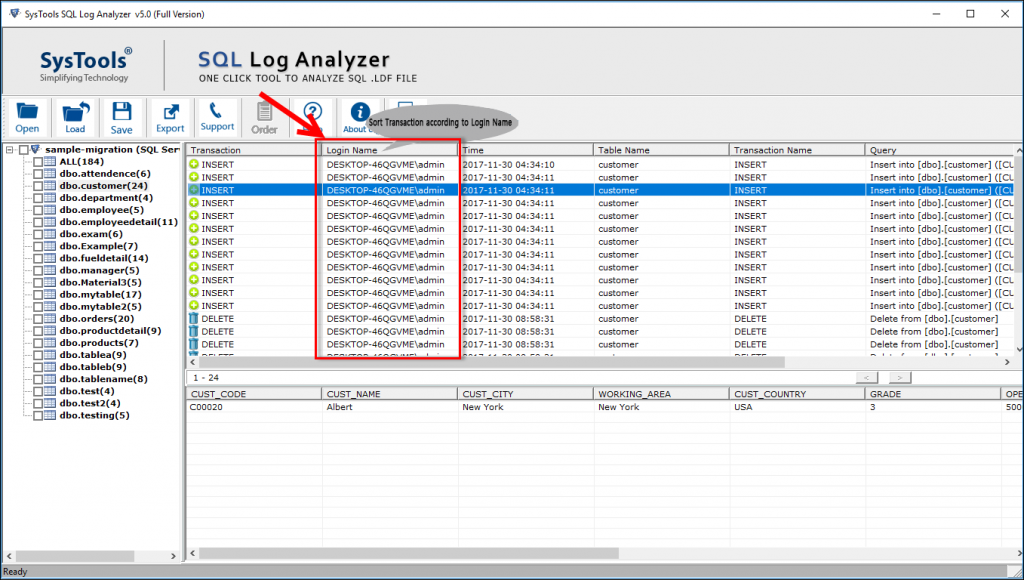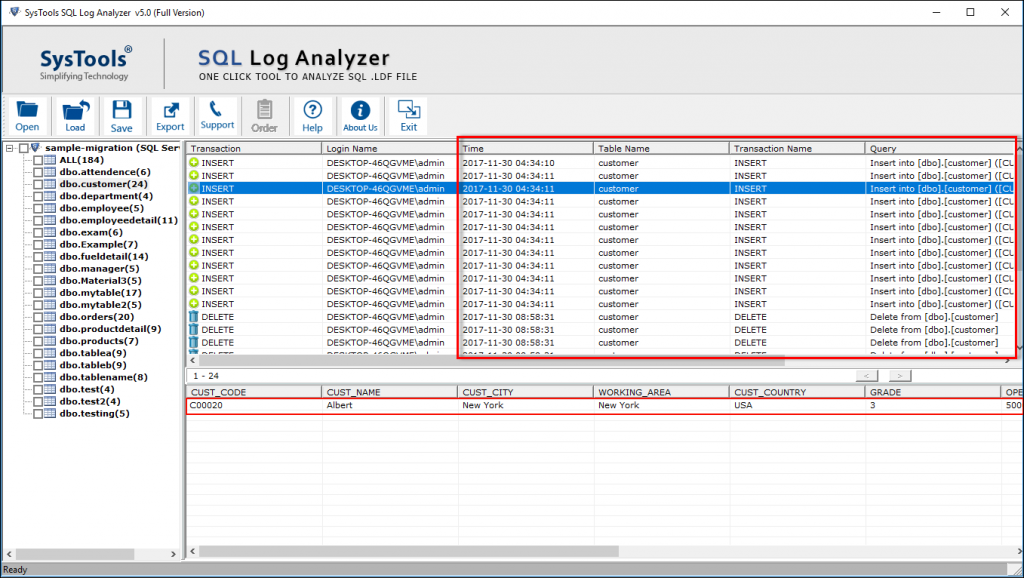How to Check Accidental Update And Delete Operations in SQL Server
Introduction
In multi-user environments, users may perform UPDATE and DELETE operations in the SQL Server database even without applying WHERE condition. Well, it is very common scenario that becomes a major reason for encountering the data loss in SQL Server. As the SQL Server is an extremely popular relational DBMS among the businesses and corporate sectors so, the data loss issue magnifies even more. Apart from this, being able to keep the track of deleted or updated records is very essential for some customers as they want to check the information like:
- Who deleted the records
- Using which application
- When date and time
- What deleted or updated
Although there are many other built-in possibilities within SQL Server for such audits. Consecutively, DBAs or users search for the ways that can track accidental update and delete operations in SQL Server database.
Is There Any Place Where SQL Server Saves Transaction Activities?
Every SQL Server has a transaction log, which records all the transactions and database changes made by each transaction. These log files are vital yet often an unnoticed component of the database architecture. Users frequently forgot them because transaction logs are not something that is maintained actively like schema contained inside a database. But, the main issue with log files is that they cannot be accessed in SQL Server. Hence, the main question is how to check accidental update and delete operations in SQL Server?
In order to answer this question, we have come up with this article. Here we will introduce you with an eminent approach to examine all the UPDATE and DELETE operations done on the SQL Server database.
How To Track Changes in SQL Server?
Auditing database activities manually is a difficult task. SysTools SQL Log Analyzer is a comprehensive database activity tracking utility that can check and read all accidental updates and deleted records from Online as well as Offline database quickly. There is no such third-party application that can decode the advance and complex format in which Log file saves the transaction history. It can view and analyze the transactions like INSERT, DELETE, and UPDATE. It helps to display the SQL Server transaction log with fields such as Transaction, transaction time, query, Table name etc. Via this, one can view the records with the Login Name Authentication for Update, Insert, and Delete with their details like class, id, name, and status.
-
- Who updated or deleted the records?
The tool sorts the information of transactions according to the Login Name and users can select any transaction to get the details of it. Login Name includes the details like CUST_CODE, CUST_NAME, CUST_CITY, WORKING_ARENA, CUST_COUNTRY, GRADE etc.
- Who updated or deleted the records?
-
- When and What records were updated or deleted?
Similarly, the tool can sort the table fields by Time via which one can get the information that when a particular transaction was executed. It will display the exact time with year, month, date, and hours. Apart from this, users also can check the Table Name, Transaction Name along with the executed query.
- When and What records were updated or deleted?
Additional Benefits of Software
The software not just view the log file details but, there are many other things that can be done via this, such as:
- Recover deleted records if database is in the Simple Recovery Mode
- Export SQL Server transaction log file queries in multiple forms
- Analyze and export multiple Secondary database files of SQL Server
Summing It Up
In this article, we have discussed on a commonly asked user query i.e., how to check accidental update and delete operations in SQL Server. Here, we have disclosed an expert approach to track and capture all the changes performed in the SQL database. Now, users can simply check and analyze the modifications along with executed queries and their timing.

